#Sioux Cheyenne
Text
Did Buffalo Bill invent the Wild West?
Buffalo Bill is often accused of having invented a fake Wild West in his shows but TV historian Tony McMahon begs to differ
You’ve heard of Annie Oakley, Calamity Jane, Chief Sitting Bull, and of course – Buffalo Bill. Those great heroes of the Wild West who created the United States of America. Frontier folk laughing in the face of danger. Battling the fearsome Sioux and Cheyenne. Free spirits living by their own code of honour at the expanding new frontiers of America. A tough life punctuated by gunfights and…

View On WordPress
#African American cowboy#Battle Little Bighorn#Bill Cody#Buffalo Bill#Buffalo Bill Edison#Calamity Jane#Cody Kansas#Cody scalping#Custer&039;s Last Stand#Edison cowboy films#General Custer#history#Sioux Cheyenne#Sitting Bull Buffalo Bill
2 notes
·
View notes
Text
Did Buffalo Bill invent the Wild West?
Buffalo Bill is often accused of having invented a fake Wild West in his shows but TV historian Tony McMahon begs to differ
You’ve heard of Annie Oakley, Calamity Jane, Chief Sitting Bull, and of course – Buffalo Bill. Those great heroes of the Wild West who created the United States of America. Frontier folk laughing in the face of danger. Battling the fearsome Sioux and Cheyenne. Free spirits living by their own code of honour at the expanding new frontiers of America. A tough life punctuated by gunfights and…
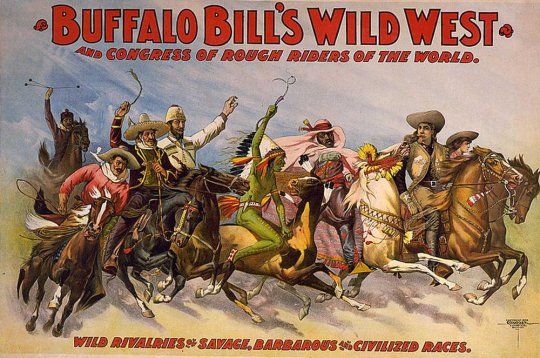
View On WordPress
#African American cowboy#Battle Little Bighorn#Bill Cody#Buffalo Bill#Buffalo Bill Edison#Calamity Jane#Cody Kansas#Cody scalping#Custer&039;s Last Stand#Edison cowboy films#General Custer#history#Sioux Cheyenne#Sitting Bull Buffalo Bill
0 notes
Text
Gov. Kristi Noem, a Trump lickspittle, is banned from 15% of her state of South Dakota. She is one of the contestants for the number two position on Trump's national ticket.
As South Dakota governor Kristi Noem vies for a top position in a second Trump White House, she appears to be more focused on shoring up her vice-presidential chances than on making allies at home — to the point that she is no longer welcome in around 15 percent of the state she governs.
Over the past few months, Noem has made several comments about alleged drug trafficking on Native American reservation lands, infuriating a number tribes in the state. In February, the Oglala Sioux Tribe banned her from the Pine Ridge Indian Reservation, the fifth largest in the United States, for claiming without evidence that drug cartels were connected to murders on the reservation.
The ban did not dissuade her from making more incendiary remarks. In March, Noem said at a community forum in Winner that there are “some tribal leaders that I believe are personally benefiting from cartels being there and that’s why they attack me every day.” When tribal leaders demanded an apology, Noem doubled down, issuing a statement to the tribes to “banish the cartels.” In response, the Cheyenne River Sioux forbade Noem from setting foot on their reservation, the fourth largest in the U.S. On Wednesday, the Standing Rock Sioux Tribe, the sixth largest in the U.S., banned her as well. On Thursday, a fourth tribe, the Rosebud Sioux, followed suit.
So far, four tribes are banning Noem:
Oglala Sioux
Rosebud Sioux
Cheyenne River Sioux
Standing Rock Sioux
Alleged drug cartels on tribal lands in South Dakota are the local equivalent of millions of migrants illegally voting in 2020. Bullshit is not just a GOP specialty but a dedicated lifestyle.
#south dakota#kristi noem#drug cartels#bullshit#tribal lands#native americans#noem banned on tribal lands#oglala sioux#standing rock sioux#rosebud sioux#cheyenne river sioux#donald trump#trump running mate#election 2024#vote blue no matter who
14 notes
·
View notes
Text

Buffalo Calf Road Woman is just like a real buffalo: beautiful and fearless!
🦬
#history#buffalo calf road woman#northern cheyenne#indigenous people#womens history#historical figures#great sioux war#battle of the rosebud#battle of little bighorn#american indian wars#native american history#girl power#george custer#indigenous americans#grl pwr#american history#wild west#united states#indigenous history#powerful woman#usa#american west#historical women#indigenous women#wild west history#nickys facts
96 notes
·
View notes
Text
.
#so#maybe a week ago#there was a post about the doll commercial movie on my dash#and it was about how yeah the movies feminism was like 101 babys first feminism#because the audience it was aimed at arent people who have read feminist theory#so of course it was just The Basics#so that critique of it wasnt really valid or whatever#kinda like the ''are you trying to buy ice cream at the hardware store?'' idea#but more ''why are you trying to sell ice cream at the hardware store?''#and the post annoyed me but im a mature adult who does not have the energy to get into fights on tumblr so i just scrolled past#and i was trying to parse through the annoyance to figure out why it annoyed me so much#and i was thinking ''did it annoy me because i was in this post and i didnt like it?''#but i kept coming back to the two references to native americans in the film and how both were insensitive#one being the comparison of the kens implementing patriarchy to barbieland to the smallpox blankets and hence the wider genocide of natives#and the other being the barbie version of mount rushmore which you know was settlers desecrating the black hills which legally belonged to#natives and was a sacred mountain (going off memory i think the sioux the cheyenne and the lakota people all had claim)#and it was thinking about thst mixed with watching a leftist youtuber cover a prageru video that i realised why that post annoyed me so much#BECAUSE#the criticism wasnt just that the feminism in it is babys first feminism with the training wheels on#(which i also still kinda have a bone to pick with tbh but thats another post for another day)#a major part of the criticsm of the films feminist themes is that they were white feminist themes#the entire film was from the perspective of a white audience#the film was assumedly white if that makes any sense#like barbie is just Original Barbie because she just is. she was the first one and everyone came after her#at no point is her whiteness even acknowledged let alone explored#the film explores things like beauty standards and workplace misogyny and motherhood and the patriarchy in general but it dares not even#tiptoe around race. it just blatantly ignores it the way second wave feminism did. and oh does that coincide so unfortunately with the kens#strike back plot which lowkey perpetuates the myth that giving equal rights to an oppressed group will lead to them oppressing you#the lens from which the film views the world is one of whiteness and ignorance and privilege. white feminism is not feminism 101#basic feminism should not exclude women of colour.
4 notes
·
View notes
Text
The Oglala Sioux tribal council voted in an historic decision Sept. 7 to purchase 40 acres of Wounded Knee land from Jeanette Czywczynski for $500,000—a move that now puts almost all of the Wounded Knee National Historic Landmark site under ownership of the Oglala Sioux.
23 notes
·
View notes
Text

Letters To The Editor Policy:
The West River Eagle welcomes letters up to 250 words. Letters to the editor are limited to one per month per person.
Profanity, name-calling, or personal attacks will not be published, nor will letters deemed to be in poor taste. Libelous or slanderous statements will also not be published.
Letters to the editor must be clear, accurate, and signed by the author. For verification purposes, letters to the editor must include full name, home address, and day and evening phone numbers. Contact information is for our purposes only – we will not share it with anyone else. Anonymous letters and letters written under a pseudonym will not be printed.
Letters may be edited for length, grammar, and accuracy. Letters will be published on a space-available basis, and there are no guarantees they will be published the week they are submitted.
The West River Eagle will not accept letters to or about political candidates 30 days before an election.
*Letters to the editor are not the views of the West River Eagle staff – they are solely the opinions of the author.
To submit a letter to the editor, send an email to [email protected]
Events, businesses, and human individuals or groups can be submitted with relevant story and contact information to [email protected] as well.
DISPLAY ADVERTISING DEADLINE: 12:00 NOON Monday
LEGAL ADVERTISING DEADLINE: 5:00 p.m. Friday
#westrivereagle #oglalalakota #lakota #cheyenneriversiouxtribe #cheyenneriver #eaglebutte #southdakota
#cheyenne river#eagle butte#oglala lakota#south dakota#westrivereagle#lakota#cheyenne river sioux tribe
2 notes
·
View notes
Video
youtube
Let's talk about Wounded Knee changing hands....
#youtube#ghost dance#native americans#beau of the fifth column#wounded knee#lakota#america#history#sioux#south dakota#massacre#Cheyenne River
1 note
·
View note
Text
History Blog recs
One of my Very Specific interests over the last...idk 10 years, has been reading blogs about the A Song of Ice and Fire series, by historians. I'm not sure what it is about those books: the complex, multi-layered narrative, the author's claim to work creatively with real world history, the micro-arguments contained in every arc, or what, but historians have the most FASCINATING shit to say about those books.*
I've learned so much about the logistics of civilization, the intellectual history of leadership theory, the history of subsistence agriculture, the type of agriculture needed to sustain societies of a certain size, the evolution of military theory, etc from this very specific, Historians Engage With ASOIAF and its Television Adaptations genre of blog.
There is, of course, the late great Steven Attewell's @racefortheironthrone, but I recently discovered this gem: A Collection of Unmitigated Pedantry by Dr. Bret C. Devereaux. I just finished his series analyzing, problematizing, and ultimately debunking George RR Martin's claim that the Dothraki "were actually fashioned as an amalgam of a number of steppe and plains cultures… Mongols and Huns, certainly, but also Alans, Sioux, Cheyenne, and various other Amerindian tribes… seasoned with a dash of pure fantasy."
In Part IV, he writes:
... declaring that the Dothraki really do reflect the real world (I cannot stress that enough) cultures of the Plains Native Americans or Eurasian Steppe Nomads is not merely a lie, but it is an irresponsible lie that can do real harm to real people in the real world. And that irresponsible lie has been accepted by Martin’s fans; he has done a grave disservice to his own fans by lying to them in this way. And of course the worst of it is that the lie – backed by the vast apparatus that is HBO prestige television – will have more reach and more enduring influence than this or any number of historical ‘debunking’ essays. It will befuddle the valiant efforts of teachers in their classrooms (and yes, I frequently encounter students hindered by bad pop-pseudo-history they believe to be true; it is often devilishly hard to get students to leave those preconceptions behind), it will plague efforts to educate the public about these cultures of their histories. And it will probably, in the long run, hurt the real descendants of nomads.
Which just. I LOVE EVERYTHING ABOUT IT. Y'all know how deeply concerned I am a. with the outsize influence the entertainment industry has on memory; and b. how little that industry gives a shit about responsible use of its own power. So like, this is my shit. I'm still exploring this blog and it is a TREASURE TROVE.
*I do not include myself in that grouping. My thoughts are like: BUT WHICH ONES ARE THE JEWS DANY IS MY UNPROBLEMATIC QWEEN/AZOR AHAI/PRINCE THAT WAS PROMISED/STALLION THAT'S GONNA MOUNT THE WORLD/ETC I CAN'T WAIT TIL SANSA SHOWS HERSELF IS DANY GONNA BURN IT ALL DOWN AND EMERGE FROM THE FLAMES LIKE THAT ELMO GIF IS ARYA GOING TO RIDE A WOLF WOW I DON'T CARE ABOUT BRAN I THINK THE RHOYNAR ARE THE JEWS WHERE IS THE GODDAMN FUCKING WINDS OF WINTER
**Also, I never watched more than 2 episodes of the show. I hated how it added in sexual violence and nudity for no reason when there was already PLENTY of that in the text, most of it with narrative purpose. But then I read the books because it was 2012 and I wanted to keep up with pop culture.
39 notes
·
View notes
Text
Terror of Scalping in the Wild West
Scalping by Indian tribes terrified the Wild West but in truth, white settlers were taking scalps as well - for money - Tony McMahon reports
Nothing struck terror into the hearts of folk in the Wild West more than stories of scalping by the Indian tribes. Throughout the 19th century, American newspapers ran lurid accounts of cranial mutilation. The peeling away of the scalp from the skull as a trophy, a keepsake from a battle by the native American peoples who had lived in the Americas before the white man arrived. So what was the…
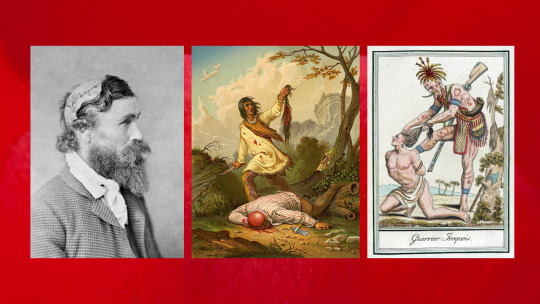
View On WordPress
#American scalping#Apache Mexican war#Apache scalping#British scalping#Cheyenne scalping#Cowboy scalping#Hamilton hair buyer#History Channel#Indian scalping#Kevin Costner#Mexican scalping#Sioux scalping#Wild West#Wild West scalping
0 notes
Text
Terror of Scalping in the Wild West
Scalping by Indian tribes terrified the Wild West but in truth, white settlers were taking scalps as well - for money - Tony McMahon reports
Nothing struck terror into the hearts of folk in the Wild West more than stories of scalping by the Indian tribes. Throughout the 19th century, American newspapers ran lurid accounts of cranial mutilation. The peeling away of the scalp from the skull as a trophy, a keepsake from a battle by the native American peoples who had lived in the Americas before the white man arrived. So what was the…
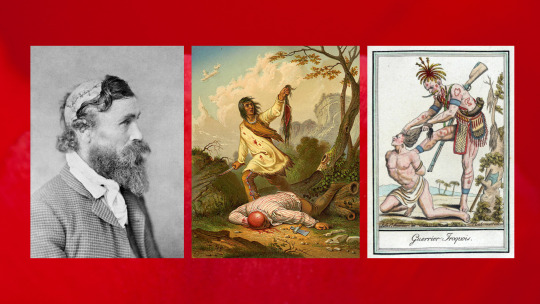
View On WordPress
#American scalping#Apache Mexican war#Apache scalping#British scalping#Cheyenne scalping#Cowboy scalping#Hamilton hair buyer#History Channel#Indian scalping#Kevin Costner#Mexican scalping#Sioux scalping#Wild West#Wild West scalping
0 notes
Text
Gather is an intimate portrait of the growing movement amongst Native Americans to reclaim their spiritual, political and cultural identities through food sovereignty, while battling the trauma of centuries of genocide.
Gather follows Nephi Craig, a chef from the White Mountain Apache Nation (Arizona), opening an indigenous café as a nutritional recovery clinic; Elsie Dubray, a young scientist from the Cheyenne River Sioux Nation (South Dakota), conducting landmark studies on bison; and the Ancestral Guard, a group of environmental activists from the Yurok Nation (Northern California), trying to save the Klamath river.
Please share!!

#please share#indigenous lives matter#indigenous#food sovereignty#activism#food#environmental justice#share share share#share#indigenous activism#nativeamericans#native plants#native women#repost this#film#documentary#films to watch#netflix#streaming now#thank you to the Allied Media Group in Detroit for hosting a screening#blaze it
208 notes
·
View notes
Text
Tribes welcome return of ancestral lands
Tuesday, February 14, 2023
By Kevin Abourezk, Indianz.Com
Kimberly Morales Johnson can’t help but imagine the land that today is Los Angeles as her ancestors would have seen it centuries ago. The Tongva people used the canyons of the San Gabriel Mountains as trading routes with the indigenous people of the Mojave desert. Last year, the Tongva reclaimed land in Los Angeles for the first time in almost 200 years after being forced to give up their lands and having their federal status terminated by President Dwight D. Eisenhower in 1950.
Sharon Alexander, a non-Native woman, donated a one-acre property in Altadena, California, to the Tongva after learning about the #LandBack movement during the 2016 Democratic National Convention and discovering that the Tongva were the original inhabitants of Los Angeles.
Johnson, vice president of the Tongva Taraxat Paxaavxa Conservancy, a nonprofit set up by the community to receive the land, said the tribe has big plans for the property. “It needs a lot of work, but we’re all dedicated to it,” she said.
In 2022, thousands of acres of private and public land in America were returned to the care of Native peoples. Many of these lands were returned to their original inhabitants, including the one-acre property in Los Angeles.
A website called the Decolonial Atlas created a “Land Back” map charting the locations of land returns that occurred last year. Other land returns that occurred last year include 40 acres around the Wounded Knee National Historic Landmark, the site of the 1890 Wounded Knee Massacre. The Oglala Sioux Tribe and the Cheyenne River Sioux Tribe bought the land for $500,000.
“It’s a small step towards healing and really making sure that we as a tribe are protecting our critical areas and assets,” Oglala Sioux Tribe President Kevin Killer told The Associated Press.
Although not a land return, the Biden administration last year signed an agreement giving five tribes – the Hopi, Navajo, Ute Mountain Ute, Ute Indian Tribe of the Uintah and Ouray Reservation, and Pueblo of Zuni – greater oversight of the 1.3-million acre Bears Ears National Monument in Utah.
Last year, the Rappahannock Tribe celebrated the return of more than 400 acres along the Rappahannock River that is home to a historic tribal village named Pissacoack and a four-mile stretch of white-colored cliffs.
“Your ancestors cherished these lands for many generations and despite centuries of land disputes and shifting policies, your connections to these cliffs and to this river remain unbroken,” Secretary of the Interior Deb Haaland said at an event celebrating the land return. One of the largest land returns last year involved the purchase of more than 28,000 acres by the Bois Forte Band of Chippewa Tribe in Minnesota.
The Conservation Fund, an environmental nonprofit, sold the land to the tribe after purchasing the land from a lumber manufacturer in 2020. Emilee Nelson, Minnesota associate state director of The Conservation Fund, said her organization bought the land from the PotlatchDeltic Corporation after the company decided to divest of much of its Minnesota land holdings. The Conservation Fund bought 72,000 acres from the company, including 28,000 acres that were within the Bois Forte Reservation. The Boise Fort Band lost the land following passage of the Dawes Act of 1887, which led to the allotment of the land to private landowners. “Where this land was located made a lot of sense for the tribe to own it,” Nelson said.
However, he said, tribes don’t always want to purchase land or even accept a land donation, especially if they don’t think they’ll be able to put it into federal trust status. He offered advice to those considering donating their land to a tribe. “If you want to make a donation, sell the land and make a donation,” he said.
As for the one-acre land donation to the Tongva, Kimberly Morales Johnson said the tribe plans to use the land to create a community center where it will be able to host cultural workshops and where Tongva people will be able to gather plants sacred to their people, including the acorns from the oak trees on the property.
“This is about self-determination and sovereignty,” she said. The tribe is also allowing a tribal artist to live on the land and take care of it, she said. The Tongva have also begun working to return Native plants to the property and remove invasive species.
“This whole LandBack movement is rooted in healing, and instead of looking at land as a commodity, we’re looking at it as a way to have a relationship with the land and with each other and bringing back our traditions, our language, our food, our culture,” she said.
200 notes
·
View notes
Text
The Apache, Sioux, Cherokee, or Cheyenne, there are many other ethnic groups such as the black-legged, arapajo, or knife. Many have formed modest demographics, allowing them to always have large expanses of land according to their uses, and they never know overcrowding or urban problems. With the arrival of European settlers starting in the 15th century, millions of these people endured massacre, persecution, and social exclusion. Structural racism in America has led them to live idly on a nature reserve, on a continent where they are the real inhabitants.

35 notes
·
View notes
Text
Now a special 30th-anniversary edition in both hardcover and paperback, the classic bestselling history The New York Times called "Original, remarkable, and finally heartbreaking...Impossible to put down."
Bury My Heart at Wounded Knee is Dee Brown's eloquent, fully documented account of the systematic destruction of the American Indian during the second half of the nineteenth century. A national bestseller in hardcover for more than a year after its initial publication, it has sold almost four million copies and has been translated into seventeen languages. For this elegant thirtieth-anniversary edition—published in both hardcover and paperback—Brown has contributed an incisive new preface.
Using council records, autobiographies, and firsthand descriptions, Brown allows the great chiefs and warriors of the Dakota, Ute, Sioux, Cheyenne, and other tribes to tell us in their own words of the battles, massacres, and broken treaties that finally left them demoralized and defeated. A unique and disturbing narrative told with force and clarity, Bury My Heart at Wounded Knee changed forever our vision of how the West was really won.
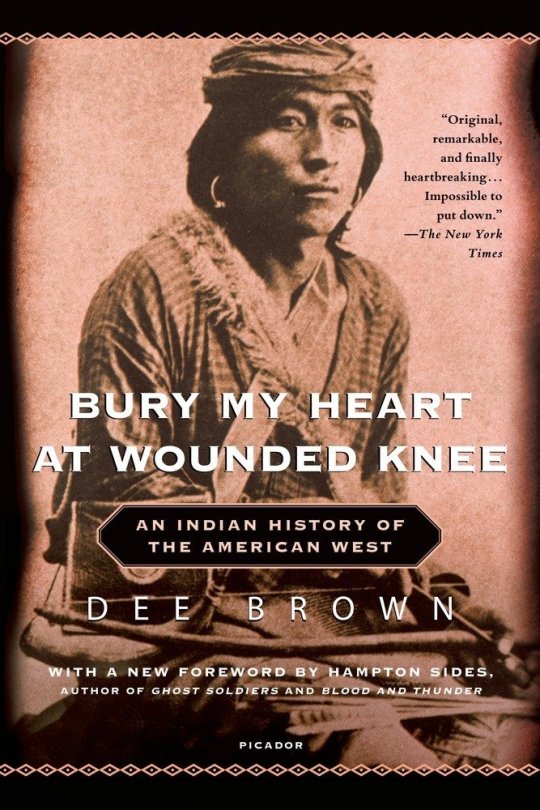
#book: bury my heart at wounded knee#author: dee brown#genre: non fiction#genre: history#genre: native american literature
25 notes
·
View notes
Photo
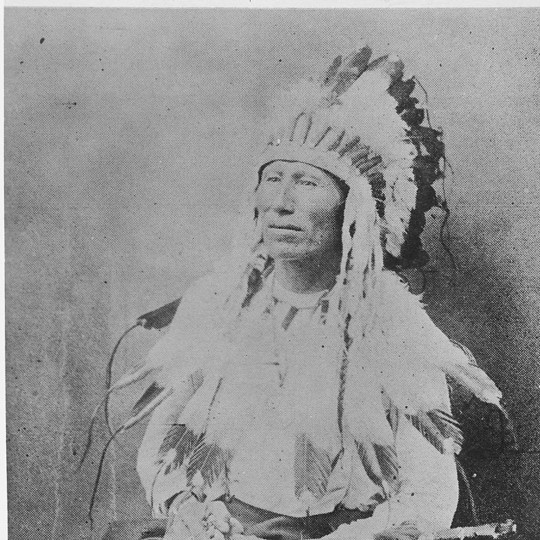
Morning Star (Dull Knife) - Eastman's Biography
Morning Star (Vooheheve, l. c. 1810-1883, better known as Dull Knife) was a Northern Cheyenne chief who led his people in resistance to the US government's policies of genocidal westward expansion. He participated in Red Cloud's War (1866-1868), various engagements between 1868-1876, and was defeated at the Battle on the Red Fork (the Dull Knife Fight) in 1876.
Afterwards, he and his people were forced from their homelands in the Dakota territories onto the reservation in modern-day Oklahoma. The conditions there were terrible and many died of disease and starvation. In 1878, Morning Star and Chief Little Wolf (also known as Little Coyote, l. c. 1820-1904) led their people out of the reservation in what has come to be known as the Northern Cheyenne Exodus, hoping to reach and reclaim their homelands in the region of modern-day Montana.
Little Wolf's band separated from the group, heading toward the Powder River territory, while Morning Star's band continued on, hoping to reach the Sioux chief Red Cloud (l. 1822-1909) and safety at the Red Cloud Agency (later the Pine Ridge Reservation). They were apprehended in October 1878 by the US Cavalry and brought to Fort Robinson where they were imprisoned and told they would have to return south to the reservation. Morning Star told the authorities:
All we ask is to be allowed to live, and live in peace…We bowed to the will of the Great Father and went south. There we found a Cheyenne cannot live. So we came home. Better it was, we thought, to die fighting than to perish of sickness…You may kill me here, but you cannot make me go back. We will not go. The only way to get us there is to come in here with clubs and knock us on the head and drag us out and take us down there dead. (Brown, 332)
Negotiations between Morning Star and authorities went nowhere, and, in early January 1879, it was decided food, water, and firewood rations would be withheld from the prisoners to force their compliance in returning south. The Cheyenne instead broke out, using weapons they had hidden in blankets and clothing, in an event later known as the Fort Robinson Breakout and Fort Robinson Massacre (9 January 1879). 60 Cheyenne were killed, 70 captured and returned to the fort, while Morning Star and a few others escaped and fled to the Red Cloud Agency where they were protected by Red Cloud.
Morning Star was then able to negotiate terms, which resulted in the establishment of the Northern Cheyenne Indian Reservation in Montana in 1884, although he would not live to see that, dying in 1883.
Eastman's Biography & Omissions
The Sioux physician, lecturer, and author Charles A. Eastman (also known as Ohiyesa, l. 1858-1939), includes Morning Star in his Indian Heroes and Great Chieftains (1916) by his Sioux name "Dull Knife" (which he is better known by, largely due to Eastman's work). Almost nothing is known of Morning Star's life prior to his participation in Red Cloud's War, and Eastman's biography reflects that.
The work includes anecdotes of the chief's younger years but focuses on his life after 1875 and, especially, the Northern Cheyenne Exodus and Fort Robinson Massacre. For unknown reasons, considering the usual accuracy of Eastman's biographies, he claims that Morning Star (Dull Knife) was killed at Fort Robinson in 1879 when it is known he lived until 1883, dying of natural causes. No explanation for this is available. The rest of the work is considered accurate, however, especially regarding Cheyenne support for the Great Sioux War (1876-1877) and the Northern Cheyenne Exodus.
Many details are omitted, however, including how Morning Star was among the chiefs present at the signing of the Fort Laramie Treaty of 1868, which ended Red Cloud's War and promised the Sioux their ancestral lands in the region of modern-day South Dakota, part of North Dakota, and Nebraska. This treaty was not honored by the US government, leading to further hostilities and, eventually, the Great Sioux War.
Morning Star was not present at the Battle of the Little Bighorn (Battle of the Greasy Grass, 25-26 June 1876) but was inspired by the victory of Sitting Bull (l. c. 1837-1890), Crazy Horse (l. c. 1840-1877), and Sioux war chief Gall (l. c. 1840-1894) to again take up arms against the US military. He and Little Wolf were defeated by troops under the command of Colonel Ranald S. Mackenzie (l. 1840-1889) and his Pawnee allies at the Battle on the Red Fork (the Dull Knife Fight) on 25 November 1876.
It was this defeat that led to the Northern Cheyenne being forcibly removed to the Southern Cheyenne Reservation in "Indian Territory" of modern-day Oklahoma in April 1877. The terrible conditions there then resulted in the Northern Cheyenne Exodus of 1878.
Continue reading...
45 notes
·
View notes